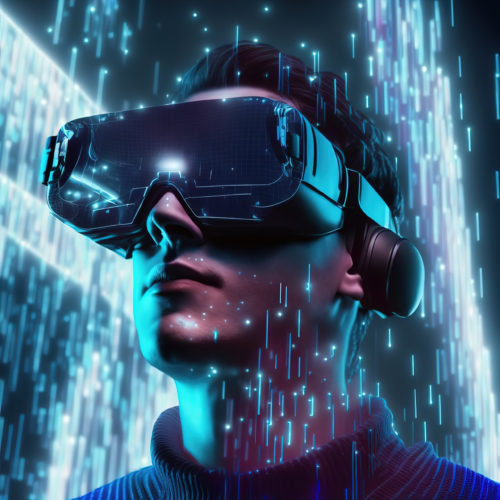What is the Metaverse?
The Metaverse is a virtual world, similar to the physical world we live in, but entirely digital. It is a shared, immersive space where people can interact with each other and with virtual objects and environments. The Metaverse is a concept that has been explored in science fiction for decades, but in recent years, advancements in technology have made it a possibility in the near future.
How will the Metaverse be used?
The Metaverse has the potential to be used in a variety of ways, including:
- Virtual reality gaming: The Metaverse could be used as a platform for virtual reality gaming, where players can immerse themselves in realistic, interactive worlds.
- Socializing: The Metaverse could become a hub for socializing and interacting with others, similar to social media platforms, but with a greater sense of immersion and presence.
- Education and training: The Metaverse could be used as a platform for education and training, allowing students and professionals to learn and practice skills in a virtual environment.
- Virtual tourism: The Metaverse could be used to virtually visit and explore real-world locations, as well as fictional ones, providing a new way to experience and learn about different places.
- Virtual events: The Metaverse could be used to host virtual events, such as concerts, conferences, and trade shows, allowing people to attend and participate from anywhere in the world.
What technologies will be used in the Metaverse?
The Metaverse will be powered by a variety of technologies, including:
- Virtual reality (VR) headsets: VR headsets will be used to immerse users in the Metaverse and provide a sense of presence.
- Augmented reality (AR) devices: AR devices, such as glasses or contact lenses, will allow users to see and interact with virtual objects in the physical world.
- Haptic technology: Haptic technology will provide users with the ability to touch and feel virtual objects, adding to the sense of immersion.
- Voice and gesture recognition: Voice and gesture recognition will allow users to interact with the Metaverse using natural forms of communication.
- Artificial intelligence (AI): AI will be used to create intelligent virtual assistants and to enhance the overall experience of the Metaverse.
What are the challenges of creating the Metaverse?
There are several challenges to creating the Metaverse, including:
- Technical limitations: There are currently technical limitations to the hardware and software needed to create a fully immersive Metaverse. For example, VR and AR devices have limited field of view and resolution, and haptic technology is still in its early stages.
- Security and privacy: The Metaverse will require robust security measures to protect user data and prevent hacking and other cyber threats. It will also need to address issues of privacy, such as who owns and has access to user data.
- Legal and ethical issues: The Metaverse will raise legal and ethical issues, such as jurisdiction, liability, and the potential for abuse.
- Accessibility: The Metaverse will need to be accessible to people with disabilities, including those who are blind, deaf, or have mobility impairments.
What is the prediction for the future of the Metaverse?
There are many predictions about what the future metaverse might look like, but one thing is certain: it will be a place where people can interact with each other and with virtual objects and environments in real-time, regardless of their physical location. The metaverse will likely be a place where people can work, socialize, and even live out their dreams and fantasies.
One potential aspect of the metaverse is that it will be highly immersive, with advanced virtual reality (VR) and augmented reality (AR) technologies allowing people to feel like they are truly present in the virtual world. These technologies will likely continue to improve, allowing for more realistic and seamless experiences in the metaverse.
Another prediction is that the metaverse will be a place where people can buy and sell virtual goods and services. This could include virtual real estate, clothing and accessories for avatars, and even virtual experiences and events. The metaverse may also become a platform for businesses to advertise and sell products and services to a global audience.
There are also predictions that the metaverse will serve as a hub for education and training. Virtual classrooms and training simulations could become a common way for people to learn new skills and knowledge. The metaverse could also be a place where people can attend virtual conferences and events, or even visit virtual museums and galleries.
Of course, the development of the metaverse will not be without challenges. One of the main concerns is the issue of security and privacy. It will be important to ensure that the metaverse is a safe and secure place for people to interact and conduct business. There will also likely be questions about ownership and control of virtual assets and property, as well as the potential for virtual crimes and disputes.
Overall, the future metaverse has the potential to be a revolutionary development in the way we live and interact with each other. While it is difficult to predict exactly what it will look like, it is clear that the metaverse will be a place where people can connect and engage with each other and with virtual experiences in a way that was previously unimaginable.
